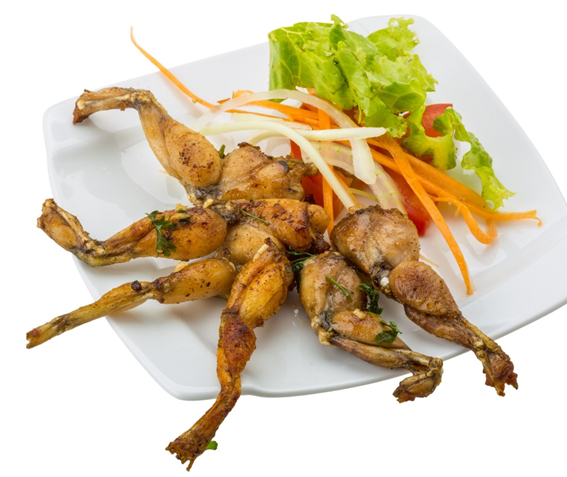Frog legs have been a traditional food in the A Limia region and in other parts of the province since time immemorial. For decades they were present in celebrations and as a tapas product in bars.
Coming from the Limia River and the dried-up Lagoa de Antela, the largest wetland in the northwest of the peninsula until its drying out in the middle of the last century, its indiscriminate and uncontrolled capture caused years ago that its fishing was prohibited in the area throughout the year. by the Xunta. Right now, according to legislation, it is among the vulnerable species and protected by legislation.
Petition
Now, a group of Limians have asked the corresponding public organizations to study lifting that ban in a controlled manner and after a detailed study of that possibility. At one time, the shortage of haunches was solved with an amphibian farm located in Rairiz de Veiga, but that company has not been operating for a long time.
Given this situation, what was once a delicacy within the reach of many citizens is now a “luxe” product that is normally purchased in few specialized establishments.
Low in calories
Stewed or fried, it is an extraordinary product. It is a low-calorie food, ranging between 50 and 76 kcal per 100 grams depending on the origin of the meat. For example, in the case of frog legs of European origin they have 53-59 kcal per 100 grams. That is why they are highly recommended in low-calorie weight loss diets. Furthermore, as white meat, frequent and not occasional consumption is recommended. The main nutrient of this type of meat is protein. It is a source of protein with 12-17% per 100 grams, and also for its quality and low level of fat. Among the other more general nutritional properties there are less than 0.1 grams of carbohydrates and 0.5 grams of fat. The cholesterol content of frog legs is very low, ranging between 25.00 mg and 40.00 mg.
General nutrition
ERegarding the nutritional aspect, the frog is a food with an important contribution of selenium, phosphorus, water and proteins and selenium helps prevent cardiovascular diseases. while stimulating the immune system. The antioxidant nature of selenium slows down the cellular aging process, while giving it preventive properties against cancer. The action of this nutrient is related to the activity of vitamin E. Phosphorus contributes to the formation and development of bones and teeth, the secretion of milk, cell division and metabolism, or the formation of muscle tissues. The high concentration of water promotes hydration.
Rest of nutrients
The rest of the nutrients present to a lesser extent in this food, ordered by relevance of their presence, are: vitamin B3, potassium, vitamin E, vitamin B12, magnesium, sodium, cholesterol, calories, vitamin B2, vitamin B, zinc, fatty acids polyunsaturated, iron, calcium, fat, saturated fatty acids, vitamin B6, monounsaturated fatty acids and vitamin B9.
An alternative for animal feed
We can consider this hypoallergenic protein source as an alternative for human nutrition as well as for our pets. Considering the importance of a good diet for our pets and the growing trend of the Barf diet, here we have an excellent alternative as a source of energy. Cartilage bones (soft bones) provide, in addition to all the benefits already mentioned, an additional source of calcium for cats, dogs and other pets. Let us remember that calcium contributes to the strengthening of bones, teeth and gums, and promotes proper blood clotting, preventing cardiovascular diseases, since calcium helps reduce blood cholesterol levels. Calcium also maintains the permeability of cell membranes, and intervenes in the process of neuromuscular activity, among other functions.
.

